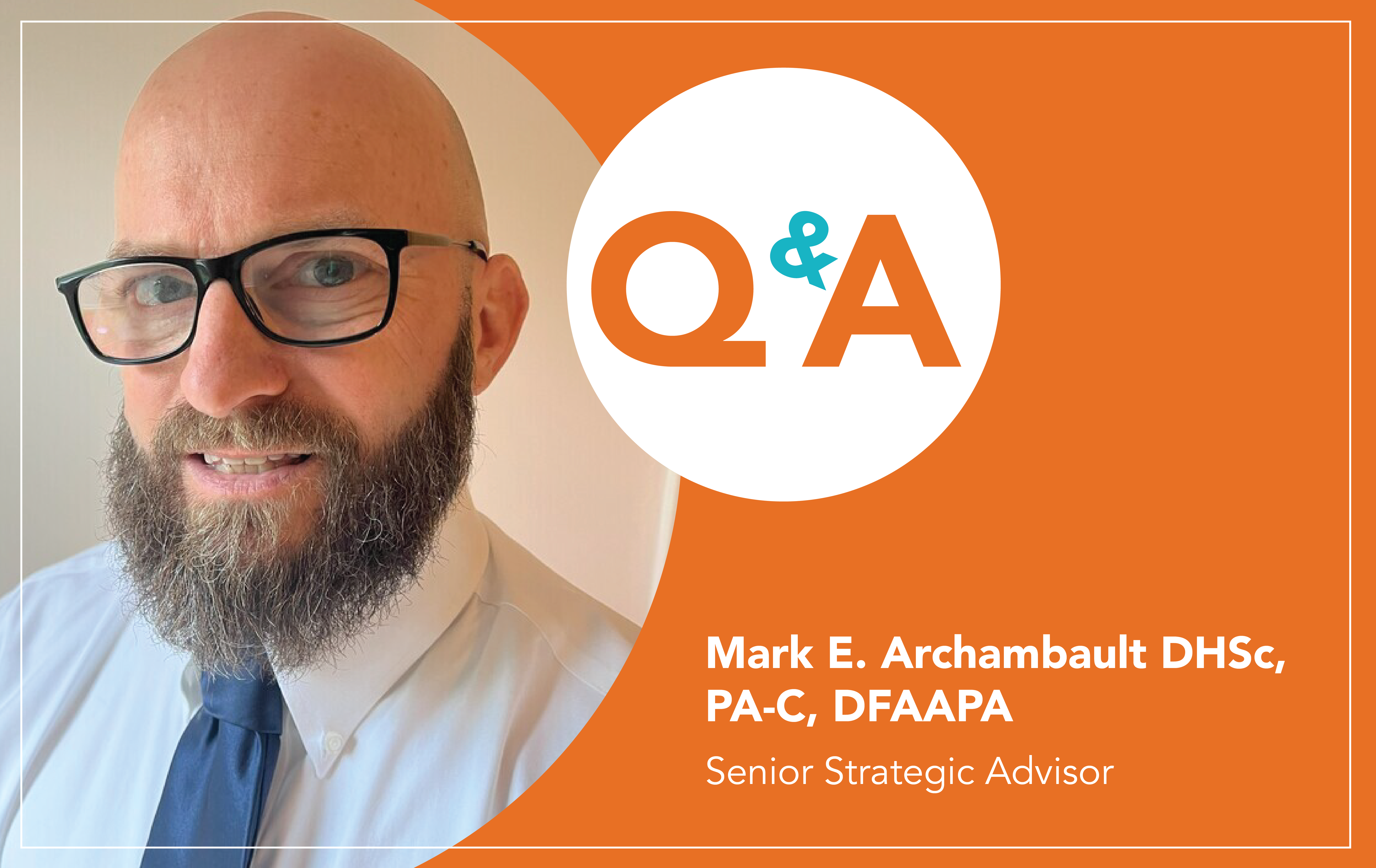Meet Mark E. Archambault, DHS, PA-C, DFAAPA, AMOpportunities Senior Strategic Advisor for Physician Assistant Education!
Mark has been a PA for 25 years, including 23 years spent in PA education. In his work, Mark focuses on supporting schools throughout the ARC-PA accreditation process.
Mark joined AMO in August and recently sat down with us for a Q&A. Read the conversation below to learn more about Mark, his background, his new role at AMO, and what he looks forward to about PAs growing role in healthcare.
What is your prior background and how did you become involved with AMOpportunities?
I’ve been a PA for 25 years and have worked in PA education for 23 of those 25 years. The last 10 years I’ve been a consultant primarily supporting new PA program development and guiding programs through the multi-step accreditation process.
I became involved with AMOopportunities when one of my clients reached out to me sharing that a student had engaged with AMO seeking clinical rotations closer to their home and the program was concerned about accreditation implications.
I initiated a conversation with AMO and thought I was going to be sharing perspectives on PA accreditation to help AMO vet their processes. To my surprise the call led to me being invited to serve as a Senior Strategic Advisor for PA Education.
Could you share a little bit about your new role with AMOpportunities, what you have already been working on, and some things you’re looking forward to?
In this role I’ve been working to ensure the processes AMO works through in securing clinical sites and preceptors meets the individual client’s needs. AMO leadership and I share the same values of ensuring this work is done with integrity and meets not only client’s but the accrediting body’s expectations as well. In addition, we’ve then looked at how AMO may be able to fine tune offerings and outreach to support key needs within the PA education community.
Our plan is to always be there when emergent needs unexpectedly arise, but our work has been more focused on prevention. For example, proactive recruiting for existing programs to support placing an entire cohort for the clinical phase, and consulting services to support new program’s clinical site and preceptor recruitment requirements.
I also had a chance to meet and chat with many PA education colleagues about AMO at the PAEA Annual Forum. Their reception to AMO has been very positive and they were excited to learn I was involved.
What are some of the biggest barriers you see PA programs face when it comes to clinical education?
There are multiple barriers related to 1) institutional support, 2) program faculty and staff workloads and burnout, 3) the pressures on clinical PAs that make it challenging to precept students, and 4) PA programs have historically relied heavily on physicians to precept students.
How do you see a service like AMO supporting PA programs in addressing these barriers?
While AMO can’t change the pressures faced by clinically practicing PAs we do make the administrative work associated with taking a student pain free for the preceptor. We also have a team of 40+ employees who can support the institution, program faculty and staff directly in their site and preceptor recruitment outreach to address faculty and staff workload and burnout.
AMO also sees value in PA students being trained by PAs and is actively looking to grow PA involvement in precepting by PAs across all geographic areas. For example, drawing in more preceptors from rural areas and HPSA/MUA sites.
What advice would you give to PA programs in the pre-accreditation stage?
There are so many topics to share advice on, but I’ll keep the focus on clinical site and preceptor recruitment because it’s the main resource outside of the institution’s direct control.
Institutions need to have a clear understanding that they are responsible for securing clinical site and preceptors and that hiring a program director, medical director, director of clinical education and others as required by the Standards isn’t the full answer to ensuring sufficiency of clinical sites. The institution will need to develop strong clinical partnerships and actively problem-solve with the program director and PA team to make sure all student placement needs are met for the maximum planned enrollment by the time of the accreditation site visit.
Preceptors typically make precepting commitments at most a year in advance, so asking for commitments that won’t occur for 2-3 years from today creates lots of communication and education challenges to convince even willing preceptors to commit and sign required documentation.
With worker shortages increasing, what opportunities do you see for PAs in the future of U.S. healthcare?
PAs were created over 50 years ago to directly address this concern and can be the main answer to our healthcare provider shortage challenges. We practice in all areas of medicine, are able to change specialties, are cost-effective, and the overall medical literature evidence supports PAs ability in providing high-quality care.
Ready to expand clinical site availability for your students or meet accreditation needs? Connect with our partnerships team at partnerships@amopportunities.org





Leave A Comment